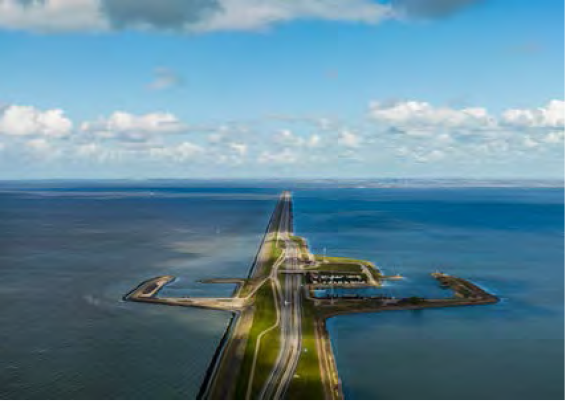- Blueenergyisgeneratedthroughcontactbetweensaltandfreshwater.
- Wageningenscientists involved from the start.
The plant generates electricity by making use of the different charges in particles of salt and of fresh water. Electricity is generated by making salt water from the Wadden Sea flow past special membranes with the fresh water of the Ijsselmeer on the other side of them. The method uses thousands of tiny pieces of gauze which between them would cover a football pitch. The amount of electricity generated is still small, but the plan is to build 1000 such modules on the Afsluitdijk, a dyke closing the Ijsselmeer offfrom the Wadden Sea. This would be enough to supply all the households of Friesland, Groningen and Drenthe with electricity.
The pilot plant was constructed by a company called REDstack but the knowledge it is based on came from Wageningen. The very first test in a Wageningen UR laboratory in 2006 produced a capacity of 0.1 W, just enough to turn a small propeller. Three years later, tens of thousands times that amount was being generated at the Frisia salt factory in Harlingen. This was still no more than a meagre 1000 Watts though. And now 50,000 Watts on the afsluitdijk, making use for the first time of an existing meeting point of salt and fresh water.
Ecological objections
Blue energy is thought to offer enormous potential. Of all the suitable rivers in the world were used for this purpose, they would generate 1,600 billion Watts, about half the electricity requirements of the EU. In the Netherlands itself, this Dutch discovery could after upscaling be applied in the form of ‘energy dykes’. But ecologists do have concerns about the effects of filtering the salt and fresh water. ‘If a 200 MW power station is established on the afsluitdijk, a flow of water will go through it as big as the Ijssel,’ says Martin Baptist of Imares Wageningen UR. ‘Huge amounts of plankton, fish and mussel larvae will have to be fil- tered out of it.’ This not only raises ecological objections, but it also has economic consequences. The Wadden Sea is precisely where mussel seed capture installations are located. A study will start at the end of 2015 to ex- amine the consequences of a large-scale Blue Energy plant for the Wadden Sea. Institutes such as NIOZ, Imares Wageningen UR and Deltares will collaborate on this
Text: Rene Didde

